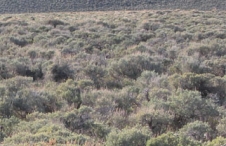Biscuitroot
The fernleaf biscuitroot, scientific species name Lomatium, is very common to the sagebrush steppe region in Nevada. Most species produce small, yellow flowers in umbrella shaped clusters and are easily recognizable by their leaves. The leafy, fern-like nature of the leaves and the general look of the plant is the source of another of its common names: desert parsley. It is the heartiest of all 81 species of Lomatium, cannot grow in shaded areas, and flourishes in open, dry, and rocky habitats.
Biscuitroot was used as both a food source and for medicinal purposes by the American Indian tribes in Nevada, specifically the Paiute, Washoe, and Western Shoshone. It is known by several other names, including Cough Root. As a medicine, fernleaf biscuitroot was used for treating multiple illnesses, including chest colds, coughs, bronchitis, influenza, and pneumonia. The roots could be burned, and the smoke inhaled for treating asthma, or steamed and inhaled for treating nasal and chest congestion. As an anti-viral poultice, the boiled, crushed root was applied to open cuts and sores. Tea was made from the leaves and used in the treatment of colds.
As a food, biscuitroot was an important source for Nevada tribes, as they could use the leaves, roots, and seeds in various ways. Many species of Lomatium have thick, tuberous roots that can be ground into flour and used to make bread-like foods, resulting in the common name “biscuitroot.” The leaves are said to have a strong parsley-like flavor. Young seeds and sprouts were collected to be eaten raw, and the roots could be used dried and ground into a powder to flavor flours and soups, or boiled to make a nutritious drink. The root could be stored in dried form for later use.
Because it was considered a valuable plant, American Indians left a bead in the hole where the root was as an offering to the earth after they collected it. In later years, settlers in Nevada used this plant as well, and patented a medicine made from biscuitroot called “Balsamea.” Many people continue to collect, eat, and use the plants today.
Article Locations
Related Articles
Further Reading
None at this time.



